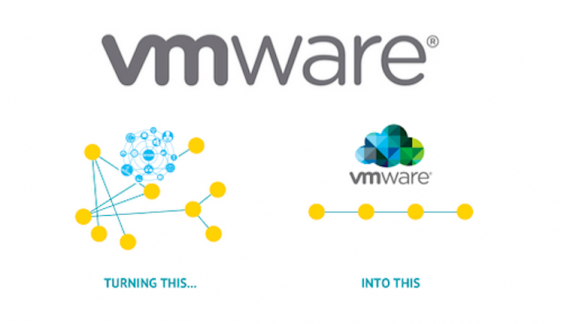by Alex Salicrup
A few weeks ago I participated in VMWare’s first vCloud Network and Security Workshop in Palo Alto. The top 50 VMware experts in networking and security from around the globe were there to discuss all things software-defined network (SDN). Topics ranged from upcoming releases of VMware’s SDN platforms to deep-dive discussions on challenges that all SDN solutions face.
With this much talent in the room, I was not surprised when information security emerged as the top concern within the software-defined data center (SDDC) suite. Arguably, the latest and most disruptive change within the SDDC, if not virtualization itself, is the SDN. The software-defined network forces today’s networking and security administrators to shift from thinking and working in a two-layer paradigm to monitoring and securing at all layers of the service stack.
Software-defined networking not only represents a big shift from how traditional physical-based network and security has been managed, it also includes a hefty risk if we think about the fact that the “eighth layer”— human beings —has the most impact on the SDDC right at the security level. Every year the security threat varies in its complexity, depending on many variables like the economy, domestic/ international affairs, or simply the competitive landscape of an industry. A few years ago a large number of data breaches were initiated from within the organization. Last year, the vast majority of breaches were from external sources, often made possible by malware. “Hacktivism” is at its peak with groups like Anonymous targeting governments and private sector companies such as Sony’s PlayStation Network. Almost all of these breaches targeted the infrastructure layer.
As often happens with the emergence of new concepts, one of the major challenges for information security is education and understanding of the SDN evolution and what it represents. Security today is horizontal, crossing all application and infrastructure layers. Because attacks target every layer of the service stack, security requires defense in-depth measures more than ever and with tools that physical-based security alone can’t achieve efficiently. As a result, security teams have to relearn the entire service stack while also maintaining their legacy knowledge.
So what are the top three challenges facing an information security administrator? The first challenge is to achieve the breadth of learning necessary to develop effective security solutions. Second, is to be resilient against the inherent delay in evolution of security tools to adapt to disruptive change. And finally, cope with the limited engagement at the outset to drive understanding in the enterprise.
Correspondingly, these challenges translate into three key operational issues—the first is the increased and often unknown threat landscapes in an environment composed of disruptive technology. The second challenge is the cross-organizational friction as IT and information security are increasingly isolated due to lack of mutual understanding of objectives. And the last challenge, albeit a tactical one, is the shutting down of the physical network as a default security enforcement mechanism—that is, when there is no longer a physical highway that can be severed if an environment is compromised.
The majority of our customers have great security risk portfolios, and my job is to help them understand how they can navigate through these operational challenges utilizing the significant data protection benefits of a software-defined data center. Security organizations can leverage the same operational advantages of any other business unit—increased efficiency and increased flexibility—enabling them to gain more advantage with the same amount of resources. They also have the ability to expand their resources as the enterprise recognizes the business advantage of rapid security engagement and security adoption of these disruptive technologies. By providing the opportunity for security organizations to learn new techniques and capabilities within the SDDC, the enterprise can reduce employee turnover by offering career progression, which translates to real cost savings. All these opportunities help change security viewpoints within the physical data center as well, evolving new approaches to traditional security.
Looking to the future, enterprises will have the ability to automate anomaly detection and quarantine entire virtual environments while still leaving a copy to conduct business operations, thus allowing for parallel tracks, incident investigation and standard operations. By reducing perceived compromises in operations to support security, the sometimes antagonistic relationship between security organizations, IT and the businesses will improve.
The software-defined network is here, the enabling technology is ready, and the benefits and efficiencies are significant for those enterprises that decide to adopt it as part of their software-defined data center solution. There are challenges, but how many of those challenges are really about the human element rather than the technology itself? To do nothing and continue to rely on the limited reach of traditional security practices in this era of increased virtualization at all levels of IT will not be an option. My recommendation to IT organizations is to begin investigating the SDN. The challenges are there, but the benefits are potentially enormous.
—
Alex Salicrup is a business solution architect for VMware Accelerate Advisory Services.
VMware Accelerate Advisory Services can help you and your key stakeholders understand the software-defined data center value proposition—our consultants quantify the potential benefits, develop architectural designs, recommend organizational and process changes, create a migration plan and advise during implementation. Visit our Web site to learn more about our offerings, or reach out to us today at [email protected] for more information.
Would you like to continue this conversation with your C-level executive peers? Join our exclusive CxO Corner Facebook page for access to hundreds of verified CxOs sharing ideas around IT Transformation right now by going to CxO Corner and clicking “ask to join group.”




